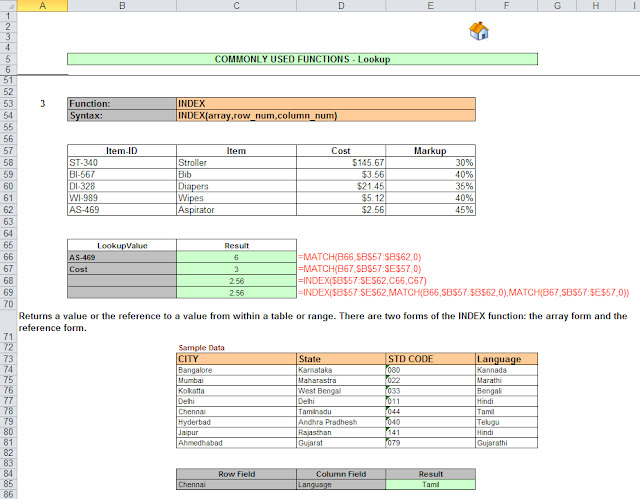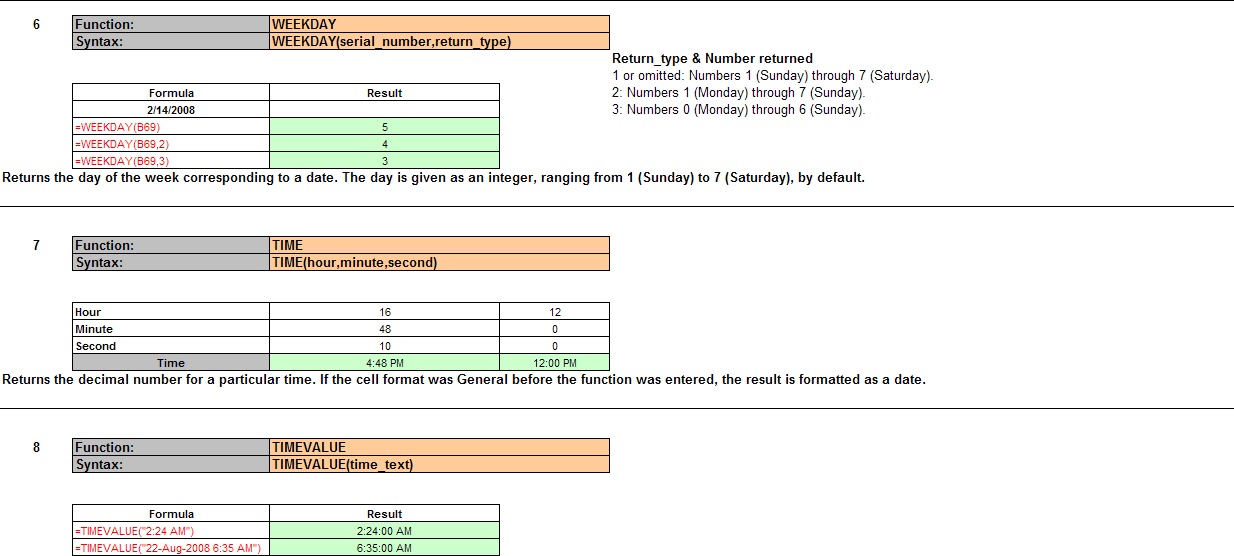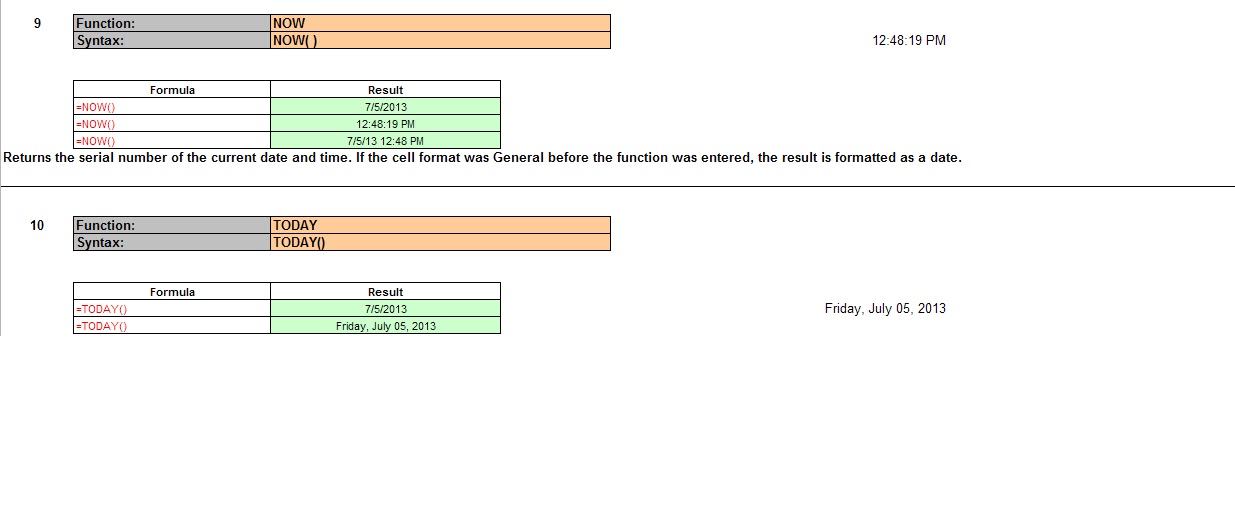·
What is RDBMS?
o
RDBMS stands
for Relational Database Management System. RDBMS data is structured in database
tables, fields and records. Each RDBMS table consists of database table rows.
Each database table row consists of one or more database table fields.
RDBMS store the data into collection of tables,
which might be related by common fields (database table columns). RDBMS also
provide relational operators to manipulate the data stored into the database
tables. Most RDBMS use SQL as
database query language.
- What are the Properties of the Relational Tables?
o Relational tables have six properties
1. Values are atomic.
2. Column values are of the same kind.
3. Each row is unique.
4. The sequence of columns is insignificant.
5. The sequence of rows is insignificant.
6. Each column must have a unique name.
o Database
normalization is the process of organizing the fields and tables of a relational database to
minimize redundancy and
dependency. Normalization usually involves dividing large tables into smaller
(and less redundant) tables and defining relationships between them. The
objective is to isolate data so that additions, deletions, and modifications of
a field can be made in just one table and then propagated through the rest of
the database using the defined relationships.
- What is De-normalization?
o Denormalization is a strategy that database
managers use to increase the performance of a database infrastructure. It
involves adding redundant data to a normalized database to reduce certain types
of problems with database queries that combine data from various tables into a
single table. The definition of denormalization is dependent on the definition
of normalization, which is defined as the process of organizing a database into
tables correctly to promote a given use.
- How is ACID property related to Database?
o The ACID properties of a DBMS allow safe
sharing of data. Without these ACID properties, everyday occurrences such using
computer systems to buy products would be difficult and the potential for
inaccuracy would be huge. Imagine more than one person trying to buy the same
size and color of a sweater at the same time -- a regular occurrence. The ACID
properties make it possible for the merchant to keep these sweater purchasing
transactions from overlapping each other -- saving the merchant from erroneous
inventory and account balances.
- What is a Stored Procedure?
o The name for a batch of Transact-SQL or CLR
code that is stored within SQL Server and can be called directly by
applications or within other programming constructs.
Types of Stored Procedures
There are two main types of stored procedure -
System stored procedures and
User-defined stored procedures
·
What is Trigger?
o A database trigger is procedural code that is automatically
executed in response to certain events on a particular table or view in a database. The
trigger is mostly used for maintaining the integrity of the information on
the database. For example, when a new record (representing a new worker) is
added to the employees table, new records should also be created in the tables
of the taxes, vacations and salaries
o
A view is a virtual table based on the
result-set of an SQL statement.
A view contains rows and columns, just like a real table. The
fields in a view are fields from one or more real tables in the database.
You can add SQL functions, WHERE, and JOIN statements to a
view and present the data as if the data were coming from one single table.
- What is
the Difference between a Function and a Stored Procedure?
o
Procedure can return zero or n values whereas function can
return one value which is mandatory.
o
Procedures can have input/output parameters for
it whereas functions can have only input parameters.
o
Procedure allows select as well as DML
statement in it whereas function allows only select statement in it.
o
Functions can be called from procedure whereas
procedures cannot be called from function.
o
Exception can be handled by try-catch block in
a procedure whereas try-catch block cannot be used in function.
o
We can go for transaction management in
procedure whereas we can't go in function.
o
Procedures cannot be utilized in a select
statement whereas function can be embedded in a select statement.
o
UDF can be used in the SQL statements anywhere
in the WHERE/HAVING/SELECT section where as Stored procedures
cannot be.
o
UDFs that return tables can be treated as
another row set. This can be used in JOINs with other tables.
o
Inline UDF's can be thought of as views that
take parameters and can be used in JOINs and other Rowsetoperations.
·
What is subquery?
Subquery
or Inner query or Nested query is a query in a query. A subquery is usually
added in the WHERE Clause of the sql statement. Most of the time, a subquery is
used when you know how to search for a value using a SELECT statement, but do
not know the exact value.
Subqueries
are an alternate way of returning data from multiple tables.
Subqueries
can be used with the following sql statements along with the comparision
operators like =, <, >, >=, <= etc.
·
Find rest sql questions:-
o
What are Different Types of Join?
o
What are Primary Keys and Foreign Keys?
o
What is User-defined Functions? What are the
types of User-defined Functions that can be created?
o
What’s the Difference between a Primary Key and
a Unique Key?
o
What is Difference between DELETE and
TRUNCATE Commands?
o
What is the Difference between a HAVING clause
and a WHERE clause?
o
Name 3 ways to get an Accurate Count of the
Number of Records in a Table?
o
What is CHECK Constraint?
o
What is NOT NULL Constraint?
o
What is the difference between UNION and UNION
ALL?
o
What is BCP? When is it used?
o
What is Aggregate Functions?
o
Is there any Performance Difference between IF
EXISTS (Select null from table) and IF EXISTS (Select from table)?
o
What is Difference in Performance between
INSERT TOP (N) INTO Table and Using Top with INSERT?
o
Does the Order of Columns in UPDATE statements
Matter?
o
Explain Few of the New Features of SQL Server
2008 Management Studio

























